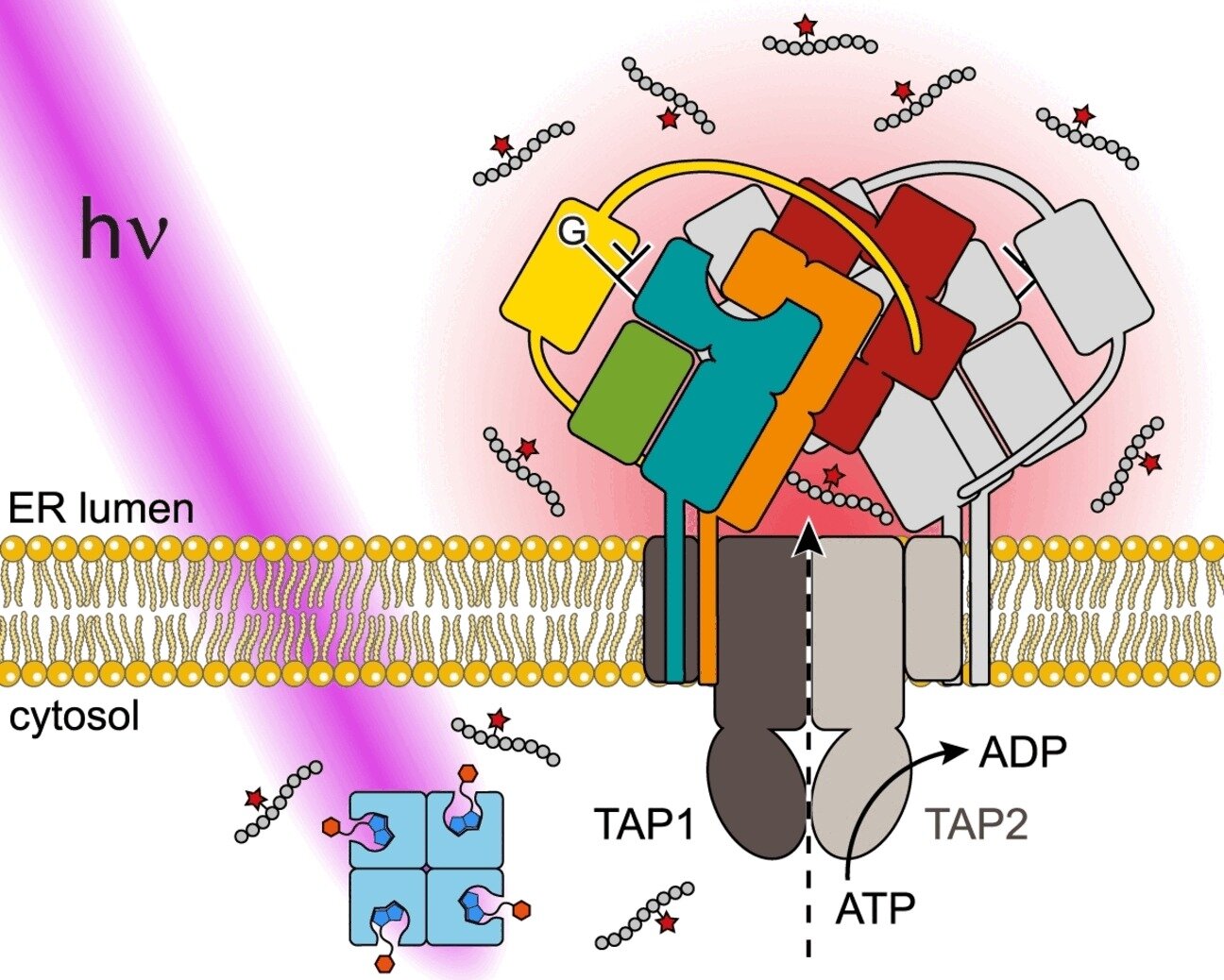The immune system is always on alert, detecting and eliminating pathogens and cancer cells. Cellular control mechanisms cause diseased cells to present antigens on their surface like signs for the immune system.
For analysis of the necessary complex antigen processing and transport processes in real time, a German team has developed a “cage” that is opened with light to release trapped antigens at a specific place and time.
In our cells, both endogenous and foreign proteins are constantly broken into tiny pieces and transported into the endoplasmic reticulum (ER), a branched system of channels enclosed by a membrane, by the transporter associated with antigen processing (TAP). There, the supramolecular peptide loading complex PLC controls the loading of MHC I (major histocompatibility complex class I) with antigenic peptides.
Certain peptides are preferentially loaded onto MHC I, further processed for immune surveillance (antigen processing) and presented on the cell surface. Peptides that come from normal endogenous proteins remain immunologically inconspicuous (barring misdirected autoimmune reactions).
Antigen Delivery Controlled by an On-Demand Photorelease


